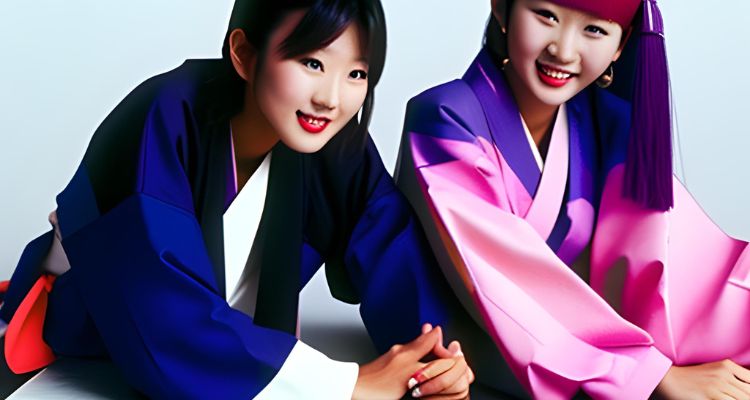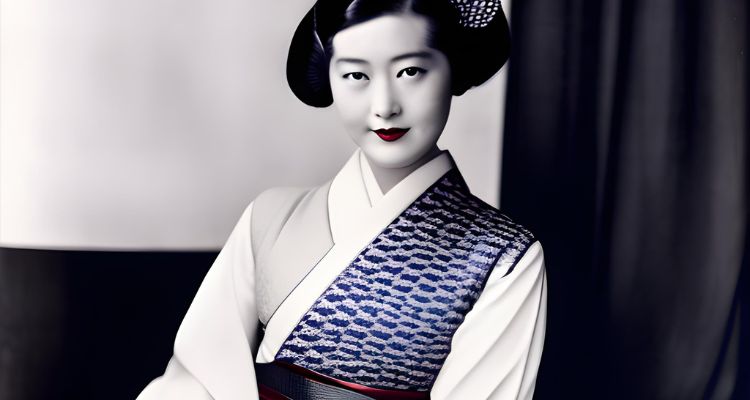Fashion is an ever-evolving industry that takes inspiration from various cultures and eras. The 90s era in Japan, particularly in Tokyo, was marked by a distinctive fashion scene that continues to influence global fashion trends today. From the Harajuku style to Lolita fashion and Gyaru fashion, the 90s saw the emergence of a range of unique fashion trends that defined Tokyo street style.
In this article, we will take a trip down memory lane and explore the iconic trends and street style evolution of the 90s Japanese fashion scene in Tokyo. We will also discuss the impact of Japanese fashion on global fashion trends and the nostalgia associated with the 90s era. Through this exploration, we hope to gain a deeper understanding of the influence of Japanese fashion and its enduring legacy.
I. 90s Japanese Fashion: The Iconic Trends
The 90s era in Japan was a time of vibrant and eclectic fashion trends that reflected the country’s pop culture and music scene. From the colorful and quirky Harajuku style to the Gothic-inspired Visual Kei style, the 90s saw the emergence of several iconic fashion trends that continue to inspire designers and fashion enthusiasts today.
One of the most recognizable trends of the 90s Japanese fashion scene is the Harajuku style. This style originated from the Harajuku district of Tokyo and was characterized by bold, bright colors, and eclectic mix-and-match patterns. It was influenced by a variety of subcultures, including punk, hip-hop, and Lolita fashion.

Lolita fashion, on the other hand, is a style that is influenced by the Victorian era and is characterized by frilly dresses, lace, and bows. The style is inspired by the notion of “kawaii,” meaning cute, and is often paired with platform shoes and over-the-knee socks.
Gyaru fashion, a style that originated in the 90s, was characterized by a tan skin tone, blonde hair, and heavy makeup. This style was a departure from traditional Japanese beauty standards and was seen as a rebellion against the conservative values of Japanese society.
Kogal fashion, another popular style of the 90s, was characterized by a schoolgirl uniform-inspired look. The style featured short skirts, knee-high socks, and loose socks, and was popularized by Japanese fashion magazines.
The Visual Kei style, meanwhile, was characterized by its androgynous and theatrical look, with men wearing makeup and donning feminine clothing. This style was heavily influenced by Japanese rock music and was popularized by bands such as X Japan and L’Arc-en-Ciel.
Finally, the 90s saw the emergence of streetwear fashion in Tokyo, characterized by oversized and baggy clothing with bold branding and graphics. This style was heavily influenced by hip-hop culture and was popularized by brands such as A Bathing Ape and Undercover.
Overall, the 90s era in Japan was marked by a range of unique and iconic fashion trends that continue to inspire designers and fashion enthusiasts around the world. The distinctiveness and creativity of these styles have helped shape the legacy of Japanese fashion and its influence on global fashion trends.
II. Tokyo Street Style: The Evolution
The 90s era in Tokyo saw a significant evolution in street style, as young people embraced new fashion trends and created their unique looks. In the early 90s, Tokyo’s street style was characterized by a minimalist and clean look, heavily influenced by Western fashion trends. However, as the decade progressed, there was a shift towards a more eclectic and colorful style, with the emergence of Harajuku and other subculture fashion trends.

Today, Tokyo’s street style continues to evolve, with a fusion of traditional and contemporary fashion influences. One of the most significant changes in Tokyo street style is the rise of genderless fashion, where men and women are embracing androgynous clothing and challenging traditional gender roles in fashion. This trend is reflected in the popularity of gender-neutral brands and styles that are not restricted by gender labels.
Another significant evolution in Tokyo’s street style is the influence of technology and social media. With the rise of Instagram and other social media platforms, fashion enthusiasts can easily share and discover new fashion trends and connect with others who share similar interests. This has led to the emergence of new fashion subcultures, such as “IG fashion” and “online shopping fashion,” where people are creating their unique looks by mixing and matching pieces from different brands and sources.
Despite these changes, the distinctive elements of Tokyo street style remain intact, such as the emphasis on individuality, creativity, and self-expression. Tokyo street style is not just about following the latest trends but about creating a unique look that reflects one’s personality and individual style.
III. Impact of Japanese Fashion on Global Fashion Trends
Japanese fashion has had a significant impact on global fashion trends, with designers and fashion enthusiasts around the world drawing inspiration from Japanese fashion aesthetics and subcultures. The distinctiveness and creativity of Japanese fashion have helped shape the global fashion landscape and have influenced designers from high fashion to streetwear.
One of the most significant impacts of Japanese fashion on the global fashion scene is the rise of streetwear fashion. Brands such as A Bathing Ape, Comme des Garcons, and Undercover have had a profound influence on the streetwear scene, with their bold graphics, unique designs, and attention to detail. The popularity of Japanese streetwear brands has led to collaborations with high-end fashion houses, such as Louis Vuitton and Dior, further cementing Japanese fashion’s influence on global fashion trends.
In addition to streetwear, Japanese fashion has also had a significant impact on high fashion. Designers such as Yohji Yamamoto, Rei Kawakubo of Comme des Garcons, and Issey Miyake have been instrumental in introducing Japanese aesthetics to the global fashion scene. Their minimalist, avant-garde designs have challenged traditional Western fashion conventions and have inspired a new generation of designers.
Another area where Japanese fashion has influenced global fashion trends is in the realm of beauty and grooming. Japanese beauty brands, such as Shiseido and SK-II, are known for their innovative and high-quality products, and their influence can be seen in the rise of K-beauty and J-beauty trends around the world.
Finally, Japanese fashion has also influenced the way people approach fashion and style. The emphasis on individuality, creativity, and self-expression in Japanese fashion has resonated with people around the world, leading to a more diverse and inclusive fashion landscape. The rise of genderless fashion and the trend towards individualistic and unique styles can be attributed, in part, to the influence of Japanese fashion on global fashion trends.
IV. Nostalgia and the 90s Era
The 90s era in Japan was a time of significant cultural and social change, and its fashion trends and subcultures have continued to capture the imagination of people around the world, especially in recent years. The 90s fashion scene in Japan was characterized by bold colors, playful prints, oversized clothing, and an eclectic mix of styles that reflected the changing cultural landscape of the time.
One reason for the resurgence of interest in 90s Japanese fashion is nostalgia. As people look back on the 90s with fondness and longing, they are rediscovering and celebrating the unique fashion trends and subcultures that emerged during that era. The nostalgia for the 90s has also been fueled by the popularity of retro fashion, which has been embraced by designers and fashion enthusiasts alike.
In addition to nostalgia, the 90s era in Japan has also been influential in shaping current fashion trends. The oversized and relaxed silhouettes of 90s Japanese fashion have been embraced by designers and fashion brands in recent years, leading to a renewed interest in baggy pants, oversized t-shirts, and other comfortable, casual clothing.
The influence of 90s Japanese fashion is also evident in the trend toward genderless fashion, which has been gaining momentum in recent years. The androgynous and unisex clothing styles that emerged during the 90s, particularly in subcultures such as the Harajuku scene, have inspired designers to create gender-neutral clothing lines and collections.
Finally, the popularity of 90s Japanese fashion can also be attributed to the increasing interest in global fashion and the fusion of different cultural influences. As people become more connected through social media and online communities, they are exposed to a wider range of fashion trends and subcultures from around the world, and the unique and eclectic styles of 90s Japanese fashion have become a source of inspiration for designers and fashion enthusiasts worldwide.
V. Conclusion
In conclusion, the fashion trends and subcultures of 90s Japanese fashion have had a lasting impact on the global fashion landscape. From the iconic trends of oversized clothing and bold prints to the evolution of Tokyo street style and the influence on genderless fashion, Japanese fashion has continued to inspire and influence designers and fashion enthusiasts worldwide.
The creativity and distinctiveness of Japanese fashion have helped shape and challenge traditional fashion conventions, leading to a more diverse and inclusive fashion landscape. The nostalgia for the 90s era in Japan, combined with a renewed interest in global fashion, has further fueled the popularity of Japanese fashion, making it an enduring and iconic era in fashion history.
As we look toward the future of fashion, it’s clear that the influence of Japanese fashion will continue to be felt, inspiring new designers and trends that will shape the fashion landscape for years to come. The bold, playful, and unapologetic styles of 90s Japanese fashion will always be remembered as a cultural and fashion milestone, representing a time of significant cultural change and innovation that continues to captivate and inspire people around the world.
